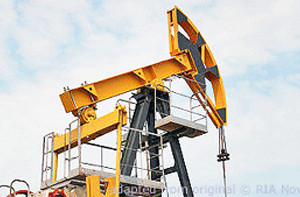Russia Retools After Crash as Post-Oil Economy Takes Shape

(Bloomberg – bloomberg.com – Olga Tanas – May 18, 2016)
Call it a stealth overhaul.
With none of the fanfare that greeted Saudi Arabia’s plan for the post-oil era, the Russian economy is quietly getting its biggest makeover under President Vladimir Putin. A trail left by crude’s collapse has turned up some unlikely survivors and even industries that found a way to prosper as the broader economy burned.
“New drivers for growth have already appeared in the economy — agriculture, chemicals, the food industry, domestic tourism,” Deputy Finance Minister Maxim Oreshkin said in an interview on Monday. “They haven’t yet made up for a drop in non-tradable sectors, which was a one-off and structural.”
Russia’s famously boom-and-bust economy is already turning heads. A contraction in the first quarter was smaller than all but one forecast in a Bloomberg survey, meaning the nation’s longest recession in two decades may end as soon as next quarter. The 1.2 percent drop in gross domestic product from a year earlier was the smallest since the decline began at the start of 2015.
While some of the shock therapy was self-inflicted, including a decision in late 2014 to shift to a free-floating exchange rate, much of it came from a bruising standoff with the West over Ukraine and turmoil in the energy markets. Tables were turned on consumer industries that took off as a $2.1 trillion energy windfall powered domestic demand for more than a decade.
Free Float
That came to an end with the decision to loosen the reins on the currency, with the central bank pulling the trigger ahead of schedule to protect its reserves as oil prices plunged. The ruble has since racked up losses against the dollar that reached 44 percent in 2014 and 20 percent in 2015, before recouping some of its decline this year with a gain of almost 13 percent. It traded 0.8 weaker at 65.2790 versus the U.S. currency as of 1:30 p.m. in Moscow.
While inflation soared in the aftermath of the ruble’s collapse, clobbering consumer demand already worn down by falling wages, one way to gauge adjustments in the economy is by looking at currency pass-through to consumer prices. Its impact on annual inflation dropped to 0.2 percentage point this year from 4.5 percentage points in 2015, Morgan Stanley estimates.
With oil prices stabilizing, inflation reached 7.3 percent from a year earlier in the past two months, down from a 13-year high of 16.9 percent in March 2015, putting the central bank on track to meet its 4 percent target in 2017.
Agriculture, Pharmaceuticals
To measure the vital signs of the economy, look to industries including agriculture, whose share in GDP last year rose to 4.4 percent, the highest since 2003. The success of farmers — boosted by a weaker ruble and tit-for-tat sanctions over the conflict in Ukraine — was one reason last year’s economic contraction of 3.7 percent was less than half the decline during the last recession, in 2009.
The legacy of the crisis so far also includes such outperformers as the information technology industry, where output soared 28 percent last year, with pharmaceuticals adding 8.8 percent and chemicals climbing 4.4 percent. No breakdown by industry is yet available for this year.
For all the signs of improvement elsewhere, oil and gas remain the lifeblood of the economy. Any gains will prove short-lived without a broader overhaul that unlocks investment.
‘One-Time’
“Some industries have benefited from the devaluation, but it’s a one-time win,” said Evsey Gurvich, head of the Economic Expert Group in Moscow. “There’s a certain shift, but a process of overhaul hasn’t yet started. What’s needed is investment, reforms, investor trust.”
Proceeds from energy account for about a third of budget revenue. That compares with 23 percent in 1996-1999 and an average of 50 percent in 2011-2014, according to Morgan Stanley. As much as a quarter of Russia’s GDP was linked to the energy industry last year, more than five times the share for agriculture.
Perhaps the biggest hurdle is Russia’s business climate. While frequently fodder for criticism, there’s progress. Russia has surged by 61 spots in the World Bank’s Ease of Doing Business Index since 2013 to 51st this year.
Central bank Governor Elvira Nabiullina’s prescription for reviving Russia’s fortunes includes a “responsible” macroeconomic policy, structural changes and development of capital markets. It’s a sentiment echoed by the likes of her first deputy, Dmitry Tulin, who said the economy is doomed to stagnation without reforms.
“The main factor for sustainable growth is an increase in investment,” Tulin said on Monday. “We can’t ensure the stability of the exchange rate now because of the structure of our economy, its excessive dependence on commodity exports.”
Article ©2016 Bloomberg L.P. All Rights Reserved. Article also appeared at bloomberg.com/news/articles/2016-05-17/russia-learns-to-live-after-crash-as-post-oil-path-takes-shape
